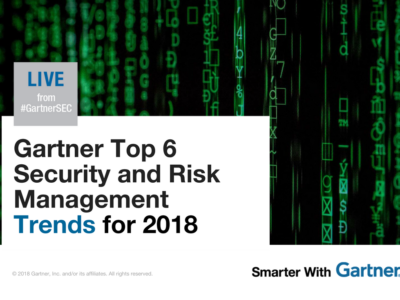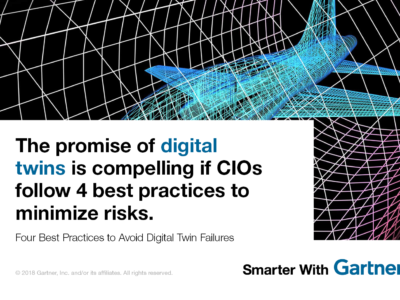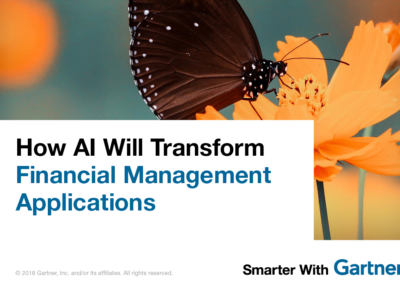7 Technologies Underpin the Hype Cycle for the Internet of Things, 2016
The challenges of creating, implementing and preparing for the IoT.
When a store begins to gather specific data about a specific customer, such as if the female customer prefers a specific brand of soda, has a birthday in June, and hits the gym four times per week, they’ll be able to predict more about that customer’s future actions than they would if they just knew it was a middle-aged female shopper. With these specific details in mind, companies can use a concept termed the “digital twin” to predict what types of purchases you might like to make at specific times. Digital twins are solidly in the technology trigger phase of the Hype Cycle for the Internet of Things, 2016.
Now in its fifth year of publication, the Hype Cycle for the Internet of Things, 2016 is focused on critical issues for enterprises implementing IoT projects, the challenges of creating custom IoT products and preparing for integration of IoT products by other business units.
The IoT will help digital transformations but will take 5 to 10 years to gain mainstream adoption…
Gartner defines a digital twin as “a dynamic software model of a physical thing or system that relies on sensor data to understand its state, respond to changes, improve operations and add value.” Digital twins are considered transformational technology because within three to five years billions of things will be represented by digital twins. Organizations can use these digital twins to proactively repair and plan for equipment service, plan manufacturing processes, operate factories or predict equipment failure. Currently, digital twins exist in a relatively narrow group of professional communities in select industries, but over the next decade–as IoT itself matures–operations managers will begin to see the value of the technology.
“The IoT itself will help digital transformations but will take 5 to 10 years to gain mainstream adoption,” said Alfonso Velosa, research vice president. The IoT remains on the peak of inflated expectations for the third year in a row as vendors push the hype even higher, but most companies struggle to find use cases beyond proof-of-concept.
However, CIOs need to prepare short-term policies for integration, analytics and security, and long term policies for governance and cooperation strategies.
Seven technologies underpin the IoT, including: Data Federation/Virtualization Tools, IoT Edge Architecture, IoT Integration, IoT Services, Low-cost Development Boards, Machine Learning, and MDM of Product Data.
IoT Services
CIOs might be in charge of implementing IoT products for all business units, but given the diversity of technologies, it can be difficult to find staff to support all IoT initiatives. IoT services are professional consulting services that provide business and technical expertise to support design, development, and deployment of IoT solutions. Given the ever expanding uses and demands of the IoT, it can be difficult to supply in-house IoT-related skills and analytic domain expertise to support IoT solutions. Businesses should define the necessary IoT service requirements and create a formal IoT service request to ensure that the IoT services are able to support all the needs of the company.
Machine Learning
While self-driving cars are probably the most well-known example of machine learning, the technology could also have an impact in automation, drug research, customer relationship management, predictive maintenance and fraud detection. Machine learning is one of of the top two concepts in IT as growing surges in data volume and increasing complexities in conventional engineering have made keeping up–for humans–extremely challenging.
In the future, industries like transportation, energy, medicine and manufacturing will not be possible without machine learning. Companies should nurture their in-house machine learning talent, and partner with universities and thought leaders to stay abreast of current data science and consider the potential business impact across a wide range of use cases.
Low-Cost Development Boards
While low-cost development boards can be used to applications such as 3D printers, robotics, and healthcare applications, they can also be used to prototype basic IoT applications. With the success of the original low-cost development boards, more and more semiconductor companies are launching their own versions, moving the technology from the Peak of Inflated Expectations to post-peak. Current boards are proving functionality, and once they prove capability, will need to be redesigned to prove reliability and cost-effectiveness for mass marketing.
The boards will shorten the time to market for designers, a critical aspect of new product development, allowing for a faster development from idea to prototype to marketing. Additionally, the availability of the boards will allow small-scale startups and individual developers to innovate and enter the industry.
Get Smarter
Client Research
Clients can learn more about the IOT in the full research Hype Cycle for the Internet of Things, 2016.
Leadership eBook
Learn how to lead through digital disruption. Download the complimentary CIO Leadership eBook.
Gartner Symposium/ITxpo 2016
Learn more about driving business performance at Gartner Symposium/ITxpo 2016. Follow news and updates from the events on Twitter using #GartnerSYM.
Upcoming dates and locations for Gartner Symposium/ITxpo include:
November 6-10, Barcelona, Spain
November 15-18, Goa, India
February 28 – March 2, Dubai, UAE











